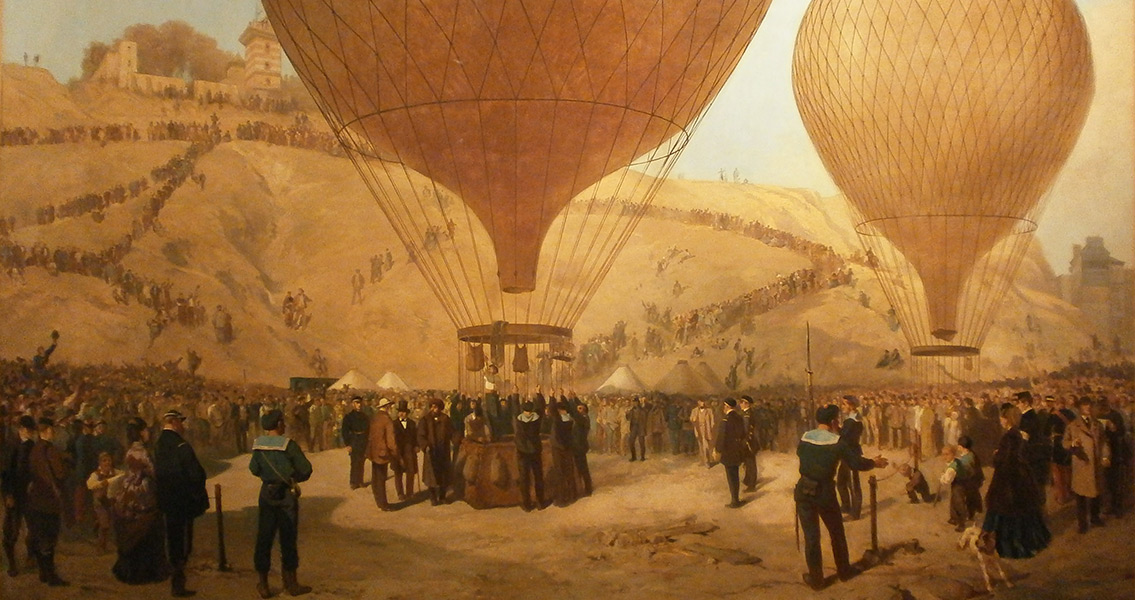<![CDATA[19th September 1870 marked the start of a miserable five months for the people of Paris, as the French capital came under grueling siege from the Prussian army. The catastrophe of the Siege of Paris was the culmination of France's catastrophic involvement in the Franco-Prussian War of 1870-71. The conflict had been brewing for sometime. Prussia's swift defeat of Austria in the Seven Week's War of 1866, had demonstrated its growing power; while the drive by Otto von Bismarck to unify the German states threatened to upset France's dominance in Western Europe. In the shorter term, the deposition of Queen Isabella from the Spanish throne in 1868 set in motion the events that would eventually lead to war. Prince Leopold of Hohenzollern-Sigmaringen, a candidate to succeed the throne, was persuaded to accept the opportunity by Bismarck and Juan Prim, the ruler of Spain. The idea of a member of the Prussian royal family on the Spanish throne greatly alarmed the leaders of France, as it would have surrounded the country by potentially hostile rulers. Ultimately, French diplomats managed to exert enough pressure to persuade Leopold to withdraw his claim to the throne, but the issue was far from over. The French government of Napoleon III, perhaps in an attempt to further humiliate Prussia, demanded a personal apology from the Kaiser: William, and a guarantee Leopold would never renew his claim to rule Spain. An edited telegram, describing the demands made by the French ambassador and the Kaiser's response, was published by Bismarck. That telegram, now referred to as the Ems dispatch in recognition of the place where the meeting between the Kaiser and the French ambassador took place, proved sufficient to push France into declaring war on Prussia in July 1870. France was poorly prepared for war compared with Prussia, and it quickly showed on the battlefield. A string of heavy defeats pushed the French army into disarray and allowed the Prussian forces, allied with troops from the southern German states, to make significant inroads into French territory. On 19th September, some 200,000 Prussian troops reached Paris; they swiftly set about besieging city. The majority of the French military had been defeated, or were engaged elsewhere, and so, the French capital was left with no choice but to stand alone. Even Napoleon III himself had been captured; his wife, the Empress, had fled to London. Under the rule of a provisional government, the "City of Lights" became a giant military camp. French soldiers, national guardsmen and volunteers took to the streets to defend the city. The Louvre was emptied of its artworks and turned into an armory. Civilian businesses were turned to military uses. With Paris isolated from the rest of France, hot air balloons were used to carry military dispatches and mail across enemy lines. Most remarkable was the provisional government formed to run the city in the chaos. Leon Gambetta, the head of the Republican party and leader of the government following Napoleon III's capture, fled to Tours by hot air balloon in October. In the power vacuum "The Government of National Defence", a substantial proportion of which was made up of academics, teachers, writers and journalists such as Victor Hugo, Adolph Thiers and Jules Favre, took control in the city. Despite the spirited defence mounted by the Parisians, the situation became increasingly desperate as it became apparent the French forces outside the capital would be unable to break the siege. The Prussian army cut-off food supplies to the city, a situation that eventually left the Parisians with no choice but to eat dogs, cats and rats. Paris' resolve was ultimately broken on 19th January, the city's population unable to hold out any longer. The government surrendered and the Siege of Paris finally came to an end. ]]>
The Siege that Forced the People of Paris to Eat Rats
